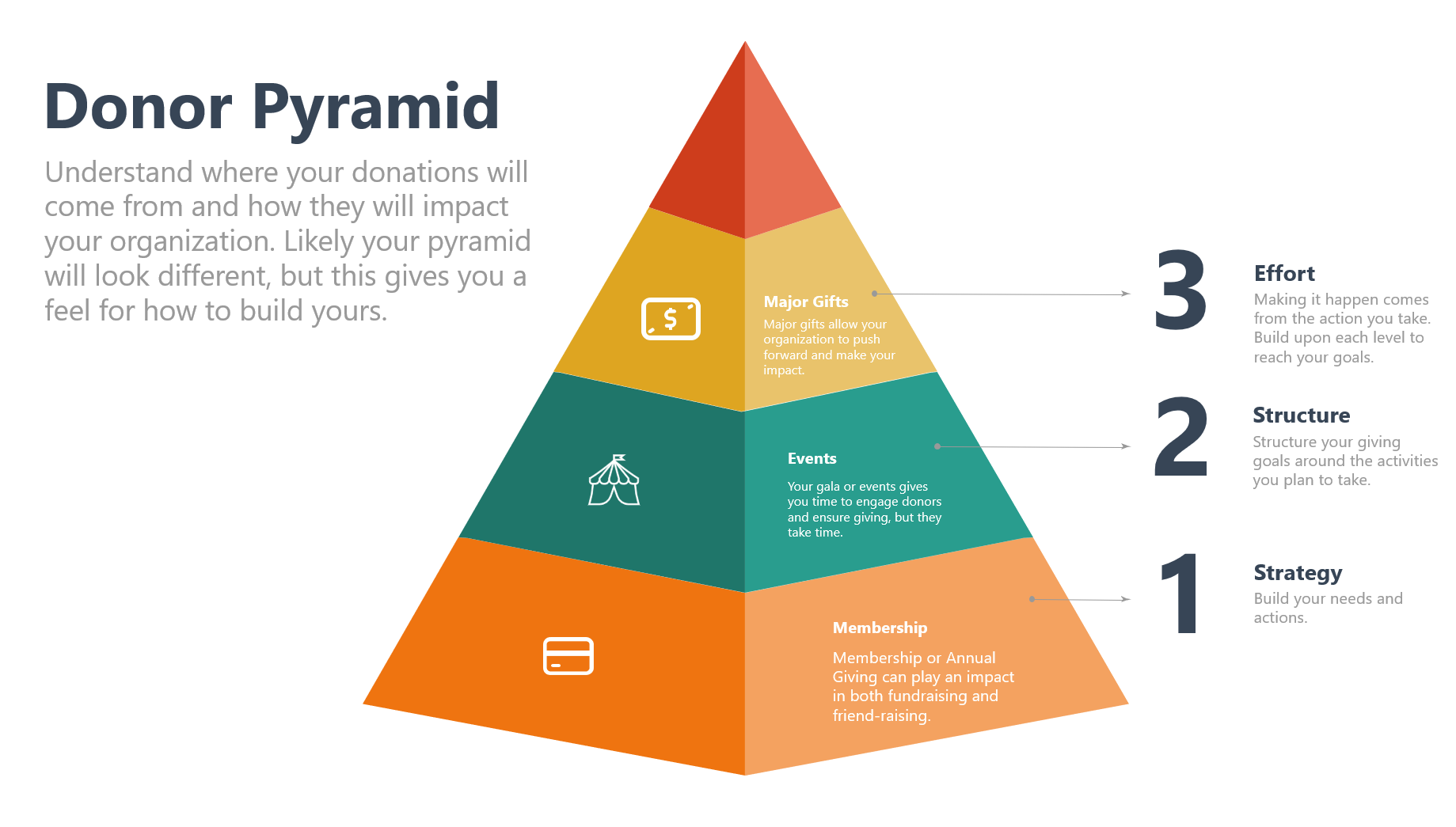What is a Fundraising Plan?
Who will write it?
A true fundraising plan becomes functional and effective when it becomes physical. Each one of your development staff probably has their own thoughts on fundraising strategy in their head, but this does not truly amount to a plan, let alone an organization-wide strategy. These strategies need to be spoken out loud together, refined and packaged into a shareable plan that can be referenced repeatedly throughout the year. This project should be undertaken by your development team (spearheaded by the development director if appropriate), in consultation with your organization-wide director (CEO, President, Executive Director, etc). If you lack a development staff, then your organizational director can write the plan, coordinating with the board. Or, if you feel like outside help is necessary, a consultant can be brought in to write this for you. Now, let’s take a look at what goes into a fundraising plan.
What goes into a Fundraising Plan?
Now, you know who will write the plan and why you need it, but what goes into a fundraising plan? If this plan will guide your fundraising strategy, it is important that you make it comprehensive and logically structured. The best place to start with any plan is the goal. You know where you want to go, so start there by defining that end destination.
1. The Goal
With the destination in mind, you can begin to plot a course of action to reach that destination. To discover your destination, ask yourself “what is the overall fundraising goal of this organization?” What is the amount that you need to raise in order to carry out your programming and maintain overhead? Take your time developing this number and don’t just throw out a number. Research and base it on the needs and means of your organization. Also, keep in mind that as you grow some “volunteers” or organizations that provide pro-bono services may become disenfranchised if you continue to not pay them for services like accounting or legal. That pro-bono effort is typically utilized to get you off the ground and is not typically thought of as perpetual, so make sure those temporary pro-bono services are factored into your planning.
2. Your Mission and Vision
In our recent blog on mission and vision statements, we said that these statements drive everything you do. Well, we meant it. They play an integral role in decision-making and strategy, so your organization must use them when crafting a fundraising plan. You need to justify why you are asking for the amount outlined in the goal section of your plan. Spell out what you will do with the funds you raise and how that directly supports your mission and advances your community toward your vision. Beyond your mission and vision, we like to utilize this time to develop an elevator pitch. This elevator pitch utilizes the mission and vision and builds them into a need to give, whereas your mission and vision typically focus on the role and drive of your organization.
3. Strategy
When it comes to tactics, there is no shortage of ways to raise money, only a limited amount of staff and volunteer resources to implement your ideas. Try to include a good mix of fundraising tactics, and be willing to nix ideas that end up not working, and make up the lost revenue elsewhere. This is an important piece, a re-assessment process of the tactics used is critical to maximizing your long-term benefit.
There are a lot of ways to raise money. A lot. In the last year, the virtual world generated many new ways to fundraise that will continue to impact the nonprofit world going forward. So, how will your nonprofit raise money? That is what the strategy section will outline. Here, you will lay out the various strategies you use. For each strategy, set a goal that, when all strategies are added up, will equal your net goal (section 1). If your total goal for fundraising is $10,000, you may aim for $5,000 to come from your events, $2,500 from individual donors, and the final $2,500 to come from grants. Some ideas for fundraising strategies are listed below but the list is not exhaustive:
Individual donors (large and small! It all adds up)
Board giving
Events (galas, auctions, other activities)
Direct Mail campaigns
Membership
Sponsorship
Online and E-Giving
Grants (foundations, corporations, or government)
Corporate giving (often a matching gift program for employees)
United Way
Participatory Fundraising (sponsoring runners or walkers, competitions, etc.)
Annual Giving and Multi-Year Giving Campaign
With so many strategies, limiting factors will be staff, resources, time, and target audience. Try various strategies, refine them, and drop those that don’t work for your organization. Each strategy has its strengths and weaknesses, so over-reliance on one strategy will lead to missed opportunities.
4. The Who
Now that you know how you’re moving forward, who is going to get you there. Perhaps you don’t have a group of names assigned to the $25, $50, or $100 gifts, but you have to have names that you know have the capacity for larger gifts. Look back through your historical giving, figure out where those donor levels are. This is also a good time to figure out how you will take those five major donors and turn them into ten. Assessing how you will grow your pool of donors is critical during this phase. It is also important to know that just because someone has the capacity doesn’t mean they will make the gift, so if you have a target of $100,000 as a lead gift in a campaign you may need ten names to find that lead gift, hopefully, those other nine names will support you at a lower level, but it will not be as simple as saying one name for each gift, so stock up on contacts with your staff and your board.
5. The Timing
Timelines or a calendar hold you accountable for your plan. The previous four sections alone are great, but they are easy to stick on the shelf to “reference when the time comes” and then are forgotten about. A timeline should consist of specific timelines for each individual strategy, noting important milestones within those strategies. Do not just list “gala” on a day in March and think all is done. Set a timeline for everything that will go into the gala: deadlines for booking a venue, selecting a speaker, for sponsors, invitation printing dates and dates to be sent, and RSVP cutoffs. This will allow you to effectively prepare your fundraising events, creating an environment conducive to fundraising and allowing more time for your development team to put the right fundraising strategies in place (auction items, raffle tickets, calls to action, etc). Your first attempt at a timeline might leave something off and that is okay. Note the omission and be prepared to refine your event for the next year. Nonprofits are always learning and building a knowledge bank for the next year. This all adds up to better fundraising and more support for your programming.
Planning is key for anything you undertake as an individual, business, and especially as a nonprofit. So many nonprofit troubles arise from a lack of planning and structure. There are many plans to have, business plans and strategic plans, or as we highlighted here, fundraising plans. Don’t rely on ideas in your head to drive your fundraising plan. Write it out, or hire an experienced nonprofit consultant to help you write it out. This will allow you to refer to your guiding strategies and goals even when development seems overwhelming. Avoid the headaches and drive your organization forward by drafting a fundraising plan today. Need help developing that plan? Hiring a consultant is a great way to get started on the right path from the outset. Check out our how to write a fundraising plan RFP blog or reach out to NMBL Strategies to learn more about our planning experience.
Without a plan, you are planning to fail. At NMBL Strategies we stand by that statement. We help nonprofits and small businesses develop the right plans that bring them proven results. Talk to us today about how we can help you plan and find success.













